Product Description
Student Guide
The 51-page student study guides are consumable resources and can only be used with one student. You'll need one guide for each student using the third grade curriculum. The answers are meant to be written in the student guide. You can purchase more student guides for additional children at a reasonable price of $11.95. The student guide begins with a Literature Guidelines section spanning over two pages which explains before, during, and after reading teaching tips. I suggest reading this informative section before beginning the study.
Teacher Guide
The 51-page teacher guide contains an exact full-size reproduction of the student pages with typed-in answer keys. The text was printed in black and white. This particular teacher guide did NOT contain any quizzes or tests in the back. Several blank note-taking pages follow the last chapter answer key.
The sturdy, laminated covers of the literature guides were color-coded. The teacher guide was topped with a light blue-green edge. The design was seen over a white background. The student guides as seen at the bottom of the photo below were darker in color. Each softcover student and teacher guide matched in color.
- Mr. Popper's Penguins by Richard and Florence Atwater
- A Bear Called Paddington by Michael Bond
- Farmer Boy by Laura Ingalls Wilder
- Charlotte's Web by E.B. White
The chapter books were not included in the set I received, but you can easily order them through the company if needed. You can also borrow these popular classic books from your local library or request them through your interlibrary loan system. I already owned all of the books used in this set. Each book in this package takes approximately 6-7 weeks to complete.
Literature Guide Differences
There is a Quotations and Discussion Questions section. The Discussion Questions take comprehension to a higher-level. I like to describe these questions as ones that require more higher order thinking skills (HOTS). For example, "How does Wilbur's treatment of the baby spiders reflect character qualities he learned from Charlotte" or "What observations does Charlotte make about people in this chapter? Do you think she is correct in her assumptions?" The Quotations section explores character quotes within a setting and contextual vocabulary. I loved that this section explained the meaning or relevance behind particular quotes.
All of the teacher guides follow a similar format and vary in length from 50-135 pages. Farmer Boy is obviously the longest teacher guide, because it was the longest chapter book. Mr. Popper's Penguins and A Bear Called Paddington are both shorter novels so those teacher guides were shorter in length. Charlotte's Web is one of the thicker guides.
The other three student and teacher guides contain additional resources such as an Appendix which includes maps of London, recipes for Orange Marmalade and Birds' Nest Pudding, thematic poetry, historical information, and non-fiction passages. We can't wait to make Orange Marmalade after reading A Bear Called Paddington! The Farmer Boy literature guide contains a biographical sketch about Laura Ingalls Wilder in addition to facts about the 19th century primer and farm machinery from the 1800's. The Charlotte's Web guide also contains an author biographical sketch about E.B. White, a non-fiction spider passage, spider short stories, and a labeled spider diagram. This is one of my all-time favorite childhood books. Even though we recently read and completed a unit study using this book, Alyssa said that she wanted to work through the Memoria Press guide and was willing to read the book a second time.
How We Used It
I used the 3rd Grade Literature Set with Alyssa (Age 8) who works at a 3rd-6th grade level. She mastered basic phonics and has a strong foundation for most advanced phonics skills. I wanted to focus more on specific comprehension skills and strategies in addition to enhancing her vocabulary using high-quality classic literature.
I owned all of the books with the exception of the additional literature book, Mofatts, which is available to purchase as an individual add-on item to the package through the online website. We started with Mr. Popper's Penguins, because my daughter was eager to read the book. We will watch the movie this weekend. Then, we plan on comparing and contrasting the movie to the book.
The literature guides were used 4-5 times per week for up to an hour or more if needed. There are 20 chapters in the book titled, Mr. Popper's Penguins. so I divided up the number of chapters to read over the review period. Alyssa read 4-5 chapters per week so that we could finish the literature guide before my review posted. She took 1-2 days off during her Spring Break because she was sick with pneumonia, but otherwise we stayed on track following this schedule. She is currently working on her Book Report. Alyssa didn't want to write a paragraph book report so she decided to create a PowerPoint to describe the story elements and give her opinion about the story.
Before Reading
I always asked Alyssa to summarize the plot read up to that point before beginning a new chapter. The following techniques were implemented: Somebody Wanted But So Then, 5 W's, and Beginning Middle, and End to retell the relevant story elements.
She completed a 2-page workbook spread each day. Let me explain the sections and what we did with them.
Pronounce and Spell
She read each important key word left to right as I listened for correct pronunciation. I asked her to define each word if possible. If she didn't know the definition, then we looked up the word in a dictionary followed by a quick discussion.
Vocabulary Exercises
We decided to review the vocabulary words prior to reading the chapters. I wanted her to know what the words meant so that she could focus on the meaning as she read. Dictionaries, thesauruses, word banks, and contextual clues were utilized from the word study section. I helped her choose the best definition or synonym for each word based on contextual clues. We also played Bingo and other word-building games to practice the words.
Note: Terminology from the Pronounce and Spell and Vocabulary sections were frequently added to her Personal Spelling Lists.
I pre-read the corresponding Comprehension Questions aloud and gave my daughter directions for reading time.
During Reading
First, she skimmed the chapter locating the new vocabulary terms. She did NOT mark them in the actual chapter book. She wrote the page number where it was found in the margins next to each numbered vocabulary word in the student guide. The student guide suggests marking each word as it is read.
My daughter read the book on the floor, couch, at her desk, or on her beanbag. She independently read one chapter per day. Occasionally, she would read aloud an exciting paragraph to me with excellent intonation. She really enjoyed the story and plot as it thickened. If she found a Pronounce and Spell word she made a dinging sound to let me know she recognize it. We attempted to utilize the key and vocabulary words throughout the week just for fun.
Alyssa indicated the page numbers for the comprehension questions in the margin next to the numbered questions in the student guide. After she completed the reading assignment, we discussed every comprehension question verbally. You can easily pick-and-choose a few to discuss verbally if desired instead of focusing on written responses, because the curriculum is so flexible. The student can complete the questions independently, but we chose to discuss them together.
She told me the page number where the answers were found and responded verbally to the questions. I clarified any misunderstandings. My daughter composed and wrote her final answer for each question on the provided lines using complete sentences and correct punctuation, capitalization, and spelling. Ample space was provided. I dictated her response as she wrote it down and assisted with composing complete and concise sentences.
When possible, we made meaningful connections to the story. For example, this book reminded her of our visit to the Penguin Encounter at Sea World.
After Reading
A conglomeration of varied Enrichment Activities were listed in bulleted format. Occasionally, I would give Alyssa a choice between two projects. I usually easily combined two or more projects for her to complete as one. We wanted to complete these projects on a separate day, but it was easier if she began it the same day. If she needed an extension to finish the project then extra time was allowed. Most projects could be completed on the same day, however, she needed at least 20-45 additional minutes to complete them. We tried to complete at least ONE enrichment project per chapter aiming for at least one writing component. These projects enabled us to incorporate other subjects into the lesson such as Art and Geography. She did some map work, drawings, and online research.
The enrichment activities helped deepen her understanding of the story. A favorite activity of hers from Chapter 10 was writing a friendly letter the Sea World Animal Ambassador asking questions about penguins. She utilized an online friendly letter maker program to type her letter before sending it. Alyssa also recently began a music appreciation study about Franz Schubert. Imagine her surprise when in Chapter 13 she had the opportunity to listen to his "Military March" and further research his life. She is MOST excited about her book report! I know . . . it sounds too good to be true but she really is because we changed it to a Powerpoint project.
Honors Activities
The Honors Activities were easily added to a day's work or could be done the next day. Sometimes I assigned these activities while we ran errands or went to piano lessons. Most of the time it was added on to her daily work load for literature class. The last activity, Noticing Details, was a little more challenging because she had to remember specific details from the entire book, but she did an exceptional job! She also didn't need to write in complete sentences which required less time.
My Thoughts and Our Results
The Third Grade Literature Guide Set from Memoria Press is complete and comprehensive for its purposes. Using the Memoria Press Third Grade Literature Guide Set benefited our homeschool tremendously. My daughter is comprehending stories better and at a deeper level using this approach. Her vocabulary is growing exponentially. I've noticed that she is more independent yet still attentive. She thoroughly enjoys the literature selections and is becoming a more active reader. She's not just reading the words fluently; she's engaging and connecting with the text. She's reading with a purpose! She is applying the skills learned to her life and to other books. Her analytical and critical thinking skills are sharpening as well. I am 100% impressed with this curriculum.
I spent hours researching literature curriculum options. It was an honor and blessing to review this one. This is by far one of the BEST literature guides I've used so far. Alyssa really liked the story and the activities. She even asked me if they had literature guides for the American Girl historical books or Black Beauty.
The lessons are not scripted but the format makes it simple to implement and user friendly especially with the teacher keys. It's pretty self-explanatory. It does seem a little writing intensive, but the flexibility of the curriculum allows the parent to easily adapt lessons.
We will definitely continue using these guides. I wanted to save the other books for next year, but my daughter insisted that we continue using the guides through the summer which means I will need a new literature grade level next year. The next book we will focus on is titled, A Bear Called Paddington.
The other third grade book selections will be used as part of a light summer school program or at the beginning of next year. I hope to purchase the 4th grade set for next year if our budget allows me to do so now that I've found something that meets her needs and works for BOTH of us perfectly. I no longer have to spent extra time planning literature lessons. Thank you Memoria Press! Overall, we ABSOLUTELY appreciate the hard work and time put into creating the Third Grade Literature Guide Set from Memoria Press.
What Features We Liked
Third Grade Literature Guide Set $95
Third Literature Guide Set with Novels $125
You can see samples and purchase options online.
Note: All prices are subject to change without notice.
Recommendations
I definitely without a doubt recommend the Third Grade Literature Guide Set from Memoria Press to all home educators. If you utilize a Christian classical education teaching method, then this curriculum may appeal to you or your school. Homeschool families and private schools utilizing a Charlotte Mason and Traditional approach may also appreciate this curriculum. I also highly recommend other products I've reviewed from Memoria Press such as Latina Christiana I and New American Cursive: Penmanship Program Workbook 1.
Social Media
Facebook
Twitter @MemoriaPress
Instagram
LinkedIn
Pinterest
Google+
Visit the Schoolhouse Review Crew blog for reviews covering several of Memoria Press's grade level literature guide sets. I am headed over there right now to read the 4th and 5th grade reviews!


I used the 3rd Grade Literature Set with Alyssa (Age 8) who works at a 3rd-6th grade level. She mastered basic phonics and has a strong foundation for most advanced phonics skills. I wanted to focus more on specific comprehension skills and strategies in addition to enhancing her vocabulary using high-quality classic literature.
I owned all of the books with the exception of the additional literature book, Mofatts, which is available to purchase as an individual add-on item to the package through the online website. We started with Mr. Popper's Penguins, because my daughter was eager to read the book. We will watch the movie this weekend. Then, we plan on comparing and contrasting the movie to the book.
The literature guides were used 4-5 times per week for up to an hour or more if needed. There are 20 chapters in the book titled, Mr. Popper's Penguins. so I divided up the number of chapters to read over the review period. Alyssa read 4-5 chapters per week so that we could finish the literature guide before my review posted. She took 1-2 days off during her Spring Break because she was sick with pneumonia, but otherwise we stayed on track following this schedule. She is currently working on her Book Report. Alyssa didn't want to write a paragraph book report so she decided to create a PowerPoint to describe the story elements and give her opinion about the story.
Before Reading
I always asked Alyssa to summarize the plot read up to that point before beginning a new chapter. The following techniques were implemented: Somebody Wanted But So Then, 5 W's, and Beginning Middle, and End to retell the relevant story elements.
She completed a 2-page workbook spread each day. Let me explain the sections and what we did with them.
She read each important key word left to right as I listened for correct pronunciation. I asked her to define each word if possible. If she didn't know the definition, then we looked up the word in a dictionary followed by a quick discussion.
We decided to review the vocabulary words prior to reading the chapters. I wanted her to know what the words meant so that she could focus on the meaning as she read. Dictionaries, thesauruses, word banks, and contextual clues were utilized from the word study section. I helped her choose the best definition or synonym for each word based on contextual clues. We also played Bingo and other word-building games to practice the words.
I pre-read the corresponding Comprehension Questions aloud and gave my daughter directions for reading time.
During Reading
First, she skimmed the chapter locating the new vocabulary terms. She did NOT mark them in the actual chapter book. She wrote the page number where it was found in the margins next to each numbered vocabulary word in the student guide. The student guide suggests marking each word as it is read.
My daughter read the book on the floor, couch, at her desk, or on her beanbag. She independently read one chapter per day. Occasionally, she would read aloud an exciting paragraph to me with excellent intonation. She really enjoyed the story and plot as it thickened. If she found a Pronounce and Spell word she made a dinging sound to let me know she recognize it. We attempted to utilize the key and vocabulary words throughout the week just for fun.
She told me the page number where the answers were found and responded verbally to the questions. I clarified any misunderstandings. My daughter composed and wrote her final answer for each question on the provided lines using complete sentences and correct punctuation, capitalization, and spelling. Ample space was provided. I dictated her response as she wrote it down and assisted with composing complete and concise sentences.
After Reading
A conglomeration of varied Enrichment Activities were listed in bulleted format. Occasionally, I would give Alyssa a choice between two projects. I usually easily combined two or more projects for her to complete as one. We wanted to complete these projects on a separate day, but it was easier if she began it the same day. If she needed an extension to finish the project then extra time was allowed. Most projects could be completed on the same day, however, she needed at least 20-45 additional minutes to complete them. We tried to complete at least ONE enrichment project per chapter aiming for at least one writing component. These projects enabled us to incorporate other subjects into the lesson such as Art and Geography. She did some map work, drawings, and online research.
The enrichment activities helped deepen her understanding of the story. A favorite activity of hers from Chapter 10 was writing a friendly letter the Sea World Animal Ambassador asking questions about penguins. She utilized an online friendly letter maker program to type her letter before sending it. Alyssa also recently began a music appreciation study about Franz Schubert. Imagine her surprise when in Chapter 13 she had the opportunity to listen to his "Military March" and further research his life. She is MOST excited about her book report! I know . . . it sounds too good to be true but she really is because we changed it to a Powerpoint project.
The Honors Activities were easily added to a day's work or could be done the next day. Sometimes I assigned these activities while we ran errands or went to piano lessons. Most of the time it was added on to her daily work load for literature class. The last activity, Noticing Details, was a little more challenging because she had to remember specific details from the entire book, but she did an exceptional job! She also didn't need to write in complete sentences which required less time.
The Third Grade Literature Guide Set from Memoria Press is complete and comprehensive for its purposes. Using the Memoria Press Third Grade Literature Guide Set benefited our homeschool tremendously. My daughter is comprehending stories better and at a deeper level using this approach. Her vocabulary is growing exponentially. I've noticed that she is more independent yet still attentive. She thoroughly enjoys the literature selections and is becoming a more active reader. She's not just reading the words fluently; she's engaging and connecting with the text. She's reading with a purpose! She is applying the skills learned to her life and to other books. Her analytical and critical thinking skills are sharpening as well. I am 100% impressed with this curriculum.
I spent hours researching literature curriculum options. It was an honor and blessing to review this one. This is by far one of the BEST literature guides I've used so far. Alyssa really liked the story and the activities. She even asked me if they had literature guides for the American Girl historical books or Black Beauty.
The lessons are not scripted but the format makes it simple to implement and user friendly especially with the teacher keys. It's pretty self-explanatory. It does seem a little writing intensive, but the flexibility of the curriculum allows the parent to easily adapt lessons.
We will definitely continue using these guides. I wanted to save the other books for next year, but my daughter insisted that we continue using the guides through the summer which means I will need a new literature grade level next year. The next book we will focus on is titled, A Bear Called Paddington.
What Features We Liked
- High-Quality Above Grade Level Classic Literature Selections
- Short Lessons Ready To Go
- Organized Lesson Layout
- Easy-To-Use and Fit Into a Busy Schedule
- Emphasis on Comprehension and Vocabulary
- Enriching Vocabulary Words
- Easily Adaptable Assignments
- Scene Summary Honors Activity Drawing
- Flexible Individualized Pace
- Strengthens Dictionary Skills
- Separate Full-Size Teacher Answer Keys
- Engaging Pick-and-Choose Enrichment Activities
- Some people may prefer that ALL of the study guides have the "exact" same consistent format within a grade level. However, I will say that it provided a little variety when starting a new guide created by a different author. The layouts were still similar enough with just a few differences to change things up a bit.
- I do wish that there was a list of culminating hands-on book projects for each book.
- It would be helpful if the teacher guide contained page and chapter numbers for vocabulary and comprehension questions to facilitate better discussions when parents don't actually read the book with the child.
Third Grade Literature Guide Set $95
Third Literature Guide Set with Novels $125
You can see samples and purchase options online.
Note: All prices are subject to change without notice.
Recommendations
I definitely without a doubt recommend the Third Grade Literature Guide Set from Memoria Press to all home educators. If you utilize a Christian classical education teaching method, then this curriculum may appeal to you or your school. Homeschool families and private schools utilizing a Charlotte Mason and Traditional approach may also appreciate this curriculum. I also highly recommend other products I've reviewed from Memoria Press such as Latina Christiana I and New American Cursive: Penmanship Program Workbook 1.
Twitter @MemoriaPress
Google+
Visit the Schoolhouse Review Crew blog for reviews covering several of Memoria Press's grade level literature guide sets. I am headed over there right now to read the 4th and 5th grade reviews!










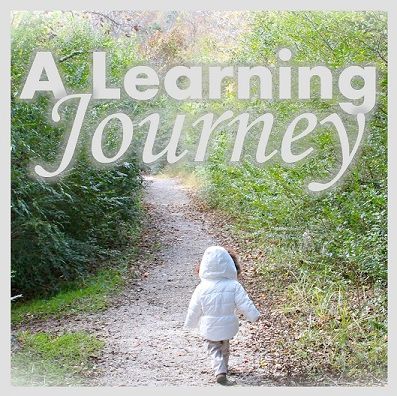






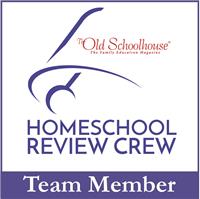
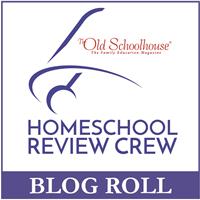




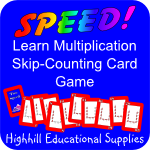
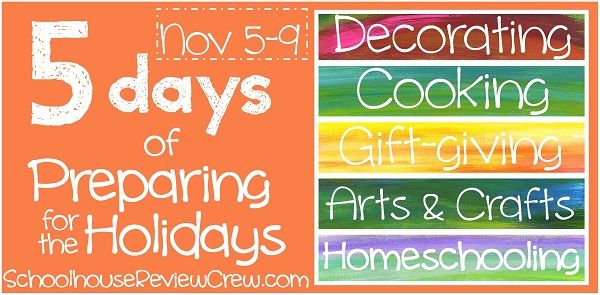
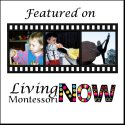


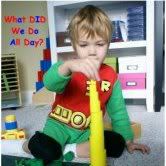

No comments:
Post a Comment